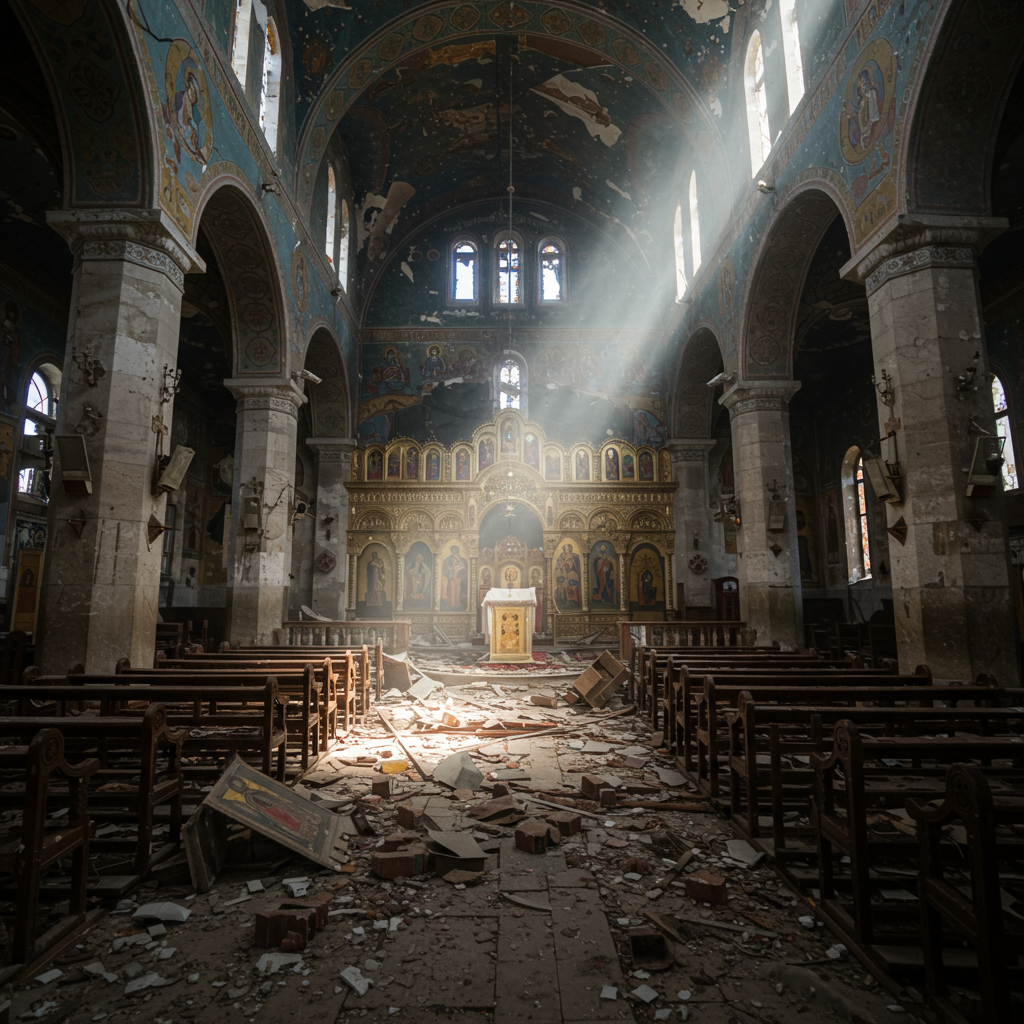reports from Gaza paint a stark picture of escalating casualties and deepening humanitarian despair. As intense bombardment continues, particularly in southern areas like Khan Younis, the daily death toll of Palestinians is mounting. This violence extends even to those desperately seeking essential aid, with hundreds reportedly killed or injured in recent weeks near distribution points.
The devastating impact on civilians is profound. Hospital sources indicate dozens were killed in a single 24-hour period across the Strip. Tragically, among the dead are individuals who were simply waiting to receive humanitarian assistance. The conflict spares no one; Marwan al-Sultan, the director of the Indonesian Hospital in northern Gaza, was killed along with his family members in an attack on a residential building southwest of Gaza City.
The Deadly Reality of Seeking Aid in Gaza
Accessing food and vital supplies has become a life-threatening endeavor for Palestinians in Gaza. As famine conditions worsen, the search for sustenance forces people into increasingly perilous situations. Recent reports highlight a grim statistic: since late May, over 600 Palestinians have been killed and more than 4,100 injured while attempting to reach aid distribution sites. These sites are now predominantly managed by the Gaza Humanitarian Foundation (GHF), an organization reportedly backed by the U.S. and Israel.
The GHF system, which began operations in late May, marked a significant shift from the previous United Nations-led aid coordination. While the UN network historically utilized around 400 distribution points across Gaza, the GHF operates only a handful of “mega-sites” – primarily four locations situated near israeli military positions. This dramatic reduction in access points, coupled with the requirement for desperate civilians to travel significant distances through active conflict zones, navigate potential checkpoints, and carry heavy loads back, has created a dangerous bottleneck. Witnesses describe perilous journeys, sometimes requiring hours of walking, for a chance at limited supplies. This setup disproportionately affects vulnerable groups like the elderly, injured, and disabled.
Allegations of Intentional Targeting
Reports from human rights monitors and media outlets include alarming allegations regarding the deaths at these aid sites. Testimonies gathered on the ground, supported by reporting from an Israeli newspaper citing unnamed soldiers, suggest that Israeli forces may have deliberately fired at Palestinians attempting to reach aid. Snipers, drones, and other heavy weapons have reportedly been used against crowds, even when individuals posed no apparent threat. One soldier was quoted describing their area of deployment near an aid point as a “killing field,” stating that multiple people were killed daily. The Euro-Med Human Rights Monitor described the centers as a “deadly trap,” placed intentionally in hazardous, militarized zones without providing safe passage.
The Israeli military has acknowledged civilian harm near aid distribution centers, stating that new instructions have been issued based on “lessons learned.” However, rights groups remain critical, viewing the pattern of events as a disregard for civilian lives.
Widespread Criticism of the GHF System
The GHF’s aid distribution model has faced condemnation from a broad coalition of international organizations. Over 170 non-governmental organizations (NGOs), including prominent groups like Oxfam, Doctors Without Borders, and Save the Children, have issued a joint declaration calling for the system’s immediate dismantling. They argue it presents Palestinians with an impossible dilemma: starve or risk being shot while seeking food.
The UN has also been critical of the GHF approach, deeming its distribution plan “inherently unsafe” and a violation of humanitarian principles. Aid groups point out that the system directly puts civilians at risk of death and injury. Save the Children, analyzing reports, found that children were killed or injured in more than half of the documented deadly incidents near food distribution sites.
Critics argue the GHF system, relying on private security and bypassing the established UN framework, is inadequate and potentially serves other agendas. Some leaked reports and humanitarian officials have described the GHF as a “fig leaf” or a “deliberate distraction” from the broader issue of insufficient aid entry and deliberate actions preventing aid delivery.
Despite the criticism and high casualty reports, the GHF has defended its operations, claiming to have delivered over 52 million meals and asserting that other groups have seen their aid looted. The organization has urged other humanitarian groups to collaborate. However, concerns persist regarding the GHF’s structure (which faced dissolution proceedings in Switzerland for legal shortcomings), its funding sources (though it claims significant commitments and a U.S. pledge), and internal issues (including reported resignations of leadership due to conflicts with humanitarian principles).
The aid parcels themselves are described as insufficient, offering calories slightly above starvation levels but lacking essential nutrition and items like clean water, medicine, or fuel. This suggests a focus on preventing immediate death rather than providing adequate long-term sustenance.
The food crisis has had a severe impact on the population, particularly children. UNICEF reports an alarming surge in child malnutrition cases requiring hospitalization, a 150% increase in just a few months. Humanitarian organizations state that these conditions are the result of “man-made decisions” that impede aid and necessary treatments.
Uncertain Prospects for a Ceasefire
Amidst the ongoing violence and humanitarian catastrophe, discussions surrounding a potential ceasefire continue, though progress remains elusive. Recent statements from former U.S. President Donald Trump suggested that Israel had agreed to terms for a ceasefire framework and urged Hamas to accept the proposal.
Hamas has indicated it is reviewing the proposal presented by mediators and is engaging in internal “national consultations” with other factions. While stating readiness for serious negotiations aimed at ending the war and securing the withdrawal of Israeli troops from Gaza – demands consistently rejected by Israeli Prime Minister Benjamin Netanyahu – Hamas has not given an outright “yes” to the current terms.
Sources close to the talks note that the proposal currently on the table is not a guaranteed end to the conflict but rather a framework for a 60-day ceasefire period during which the end of the war would be negotiated. Significant mistrust persists between the parties, a factor that has derailed previous agreements. Critics observing the situation express cynicism, highlighting the perceived hypocrisy of discussing a ceasefire while conditions on the ground appear to be escalating. Many express anxiety and mistrust regarding external involvement, particularly the U.S., in effectively resolving the crisis.
Expanding Home Demolitions in the West Bank
The humanitarian crisis and conflict dynamics are not limited to Gaza. In the occupied West Bank, Israeli forces are reportedly escalating home demolitions across Palestinian refugee camps and villages. This practice, ongoing for decades, has intensified significantly since early this year.
Areas like the Jenin and Tulkarem refugee camps have seen extensive military operations and widespread destruction. Hundreds of Palestinian homes have been demolished in recent months, with reports indicating hundreds more are at risk. These demolitions are not confined to refugee camps; reports describe homes being razed in villages near Ramallah as well.
An Israeli architect and urban planner from a human rights organization characterized these actions, often termed “security demolitions,” as part of a broader strategy to expand Israeli control. He suggests that demolitions are carried out to create routes for military vehicles within camps and that this practice works hand-in-hand with Israel’s control over the civil planning system. The denial of building permits for Palestinians – with less than 1% of applications reportedly approved – combined with demolitions is viewed by critics as a means to control land and perpetuate discrimination. The conflict, he argues, is fundamentally over land, and planning regulations are a powerful tool being used to “conquer” territory, particularly in Area C, the Israeli-controlled administrative division comprising over 60 percent of the West Bank.
Frequently Asked Questions
What is the Gaza Humanitarian Foundation (GHF) and why is it controversial?
The Gaza Humanitarian Foundation (GHF) is a new aid distribution system in Gaza reportedly backed by the U.S. and Israel. It began operating in late May 2025, largely replacing the previous UN-led system. It’s controversial because it operates a small number of “mega-sites” near Israeli military positions instead of numerous, widespread UN points. Critics, including over 170 NGOs and the UN, argue this system is unsafe, inadequate, and places Palestinians at severe risk of death or injury while seeking aid. There are also reports of legal issues with the organization and internal resignations.
How many Palestinians have reportedly been killed or injured near Gaza aid sites?
According to reports from sources including the Gaza Ministry of Health and human rights monitors like Euro-Med Human Rights Monitor, over 600 Palestinians have reportedly been killed and more than 4,100 injured near aid distribution sites managed by the GHF since the system began operations in late May 2025. These casualties have occurred amidst alleged deliberate targeting by Israeli forces, as reported by witnesses and some media outlets citing military sources, while civilians attempt to access food and supplies.
Why are Palestinian homes being demolished in the West Bank according to the article?
Reports indicate that Israeli forces are demolishing hundreds of Palestinian homes in the occupied West Bank, including in refugee camps and villages. According to an Israeli architect and urban planner cited in the article, these demolitions, sometimes called “security demolitions,” are used to facilitate military access and are part of Israel’s control over the civil planning system. Critics argue this practice, combined with the low approval rate for Palestinian building permits, is a tool used to control land, create discrimination, and expand Israeli control over the territory, particularly in areas like Area C.
Conclusion
The situation across the Palestinian territories remains critical, characterized by ongoing violence in Gaza, a deepening humanitarian catastrophe linked to aid access challenges, stalled ceasefire negotiations, and escalating home demolitions in the West Bank. The alarming number of casualties among Palestinians seeking aid underscores the dire conditions and the life-threatening risks associated with securing basic necessities. As international bodies and NGOs voice strong criticism and calls for change, the multifaceted crisis continues to inflict severe hardship and loss of life on the civilian population.
References
- www.cbc.ca
- www.yahoo.com
- truthout.org
- www.palestinechronicle.com
- <a href="https://www.democracynow.org/2025/5/29/thecatastropheingaza600_days”>www.democracynow.org


